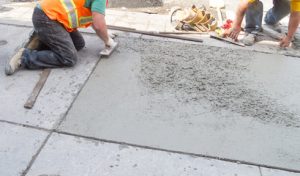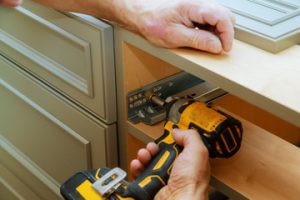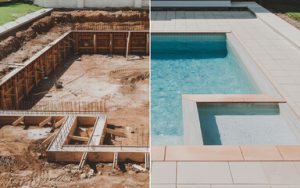Concrete is more than a building material. It’s evolving into a solution for environmental challenges. Innovations in its composition are redefining construction. These advances show the shift toward smarter and greener infrastructure.

One of the latest trends involves carbon-negative concrete. This means it absorbs more carbon than it emits. Using captured CO2 in its curing process helps reduce the carbon footprint. Builders are starting to favor this method in eco-conscious designs. Visit Our Website Here to learn more.
Self-healing concrete is also gaining traction. This type repairs cracks on its own using embedded bacteria. When moisture enters the cracks, the bacteria produce limestone. The cracks are sealed naturally, extending the life of structures.
A new innovation is translucent concrete. This material allows light to pass through embedded optical fibers. It maintains structural strength while enhancing design. It’s ideal for artistic and functional use in modern architecture.
Another exciting development is 3D printable concrete. This enables rapid construction using robotic arms. It reduces labor and speeds up the process. Homes and structures can be built with less waste and lower costs.
Smart concrete is now being used in roads and bridges. It can detect stress, vibrations, and temperature changes. This data helps engineers monitor infrastructure health. It leads to safer and more efficient maintenance strategies.
Concrete infused with phase-change materials is emerging. These materials regulate indoor temperatures. They absorb heat during the day and release it at night. This helps reduce reliance on HVAC systems.
Another innovation is concrete that purifies air. It contains photocatalytic compounds that break down pollutants. This is especially useful in urban environments. Air quality improves around structures made with this mix.
Lightweight concrete using recycled materials is also trending. It replaces traditional aggregates with waste products. These include crushed glass, rubber, or plastic. This reduces environmental impact and enhances material reuse.
Concrete infused with graphene is now being explored. Graphene increases tensile strength and conductivity. It results in thinner and stronger structures. It also contributes to more energy-efficient buildings.
Permeable concrete is being used to prevent flooding. It allows water to pass through its porous surface. This reduces stormwater runoff and erosion. It’s a sustainable choice for parking lots and sidewalks.
Color-changing concrete is being developed for road safety. It changes shade based on temperature or weather. This alerts drivers to icy or hot conditions. It enhances road visibility and reduces accidents.
There is also growing interest in bio-concrete. This involves using algae or fungi in the mix. These organisms provide regenerative features. The result is a living material that adapts to its environment.
Modular concrete panels are rising in popularity. These panels are pre-made and assembled on-site. They reduce construction time and increase efficiency. They’re ideal for housing projects and temporary structures.
Nano-engineered concrete is pushing the limits of strength. Nanoparticles enhance durability and crack resistance. They make the material more compact and resilient. It leads to longer-lasting buildings with minimal repairs.
There is movement toward thermal-insulated concrete blocks. These blocks help reduce energy loss. They’re effective for passive house designs. They also lower heating and cooling costs over time.
Water-resistant concrete is another game changer. It is especially important in flood-prone areas. The material repels moisture and prevents damage. It helps protect infrastructure from water-related decay.
Flexible concrete is being tested for earthquake resistance. It can bend slightly under pressure without breaking. This improves safety in seismic regions. It allows buildings to absorb and dissipate energy.
Floating concrete is a new frontier in marine architecture. It is lightweight and buoyant yet strong. This material supports offshore structures and floating homes. It broadens the possibilities of water-based development.
Concrete made with volcanic ash is another innovation. It lowers the need for cement, which emits CO2. The ash boosts durability and reduces shrinkage. It’s a nod to ancient construction methods with modern benefits.
Transparent concrete is being explored for solar integration. It can transmit sunlight while supporting solar panels. This dual-purpose design enhances building efficiency. It merges aesthetics with renewable energy goals.
Geopolymer concrete is replacing Portland cement in some projects. It uses industrial byproducts instead of limestone. This results in lower emissions during production. The final product is strong and long-lasting.
Reinforcement-free concrete is under study. It uses synthetic fibers instead of steel bars. This prevents corrosion and simplifies design. Maintenance needs are greatly reduced as a result.
Some researchers are exploring magnetic concrete. This material can respond to electromagnetic fields. It could lead to new applications in security and technology. It’s still experimental but full of potential.
Concrete roads with embedded charging coils are in development. These coils charge electric vehicles as they drive. The goal is seamless energy transfer. This concept supports clean transportation systems.
Glow-in-the-dark concrete is being used in paths and roads. It contains photoluminescent particles that absorb light. At night, the particles emit a gentle glow. It improves visibility without needing electricity.
Concrete bricks with air-purifying moss are also emerging. The moss grows on the surface and captures pollutants. It also cools the surrounding air. This green touch adds life and function to urban walls.
Solar-reflective concrete helps mitigate urban heat. It reflects rather than absorbs sunlight. This keeps surfaces cooler and reduces heat islands. It’s being used in sidewalks and parking areas.
Concrete mixed with cellulose fibers is showing promise. It utilizes plant waste to strengthen the mix. The result is a greener and more sustainable product. It’s another step toward circular construction methods.
Concrete is also being reimagined through AI-based design. Algorithms optimize mix proportions and curing schedules. This results in efficient material use and better quality. It also reduces human error in formulation.
Cryogenic concrete is used in extreme cold environments. It withstands temperature drops without cracking. This is crucial for arctic stations and cold storage. The innovation ensures durability in harsh conditions.
Some developers are working on sound-absorbing concrete. This helps reduce noise in busy cities. It uses porous structure to trap sound waves. The material makes urban living more peaceful.
Reactive powder concrete is another futuristic material. It offers ultra-high strength and density. This allows for slim yet strong designs. Bridges and towers benefit from this advanced formulation.
Shape-memory concrete is being explored in labs. It can return to a set form when heated. This could allow structures to self-correct after shifts. It’s still in testing but highly promising.
Concrete shells for vertical gardens are also gaining attention. They support climbing plants while stabilizing walls. This fusion adds greenery to dense spaces. It balances engineering and nature.
Heat-conducting concrete is being used in cold zones. It melts snow on walkways using embedded wires. This prevents slips and reduces the need for salt. It improves pedestrian safety during winter.
Cork-infused concrete is another eco-focused material. It reduces weight while boosting insulation. It’s fire-resistant and biodegradable. It reflects the industry’s shift to renewable inputs.
Waste-to-concrete processes are gaining traction. These involve turning industrial sludge into aggregates. It cuts down landfill use and emissions. The material meets structural standards while cleaning waste.
Recyclable concrete is being designed for disassembly. At the end of its life, it can be broken down easily. The components are reused in new mixes. This supports a circular economy in construction.
Researchers are using drone-assisted concrete application. Drones spray or pour concrete in hard-to-reach spots. This improves safety and efficiency. The technology also speeds up certain phases of building.
Temperature-adaptive concrete is being prototyped. It expands or contracts based on external heat. This maintains stability and reduces thermal cracking. It’s ideal for regions with fluctuating climates.
Concrete paired with solar skins is an emerging trend. The skins convert sunlight into power. The base remains solid while the surface generates energy. It blends form, function, and sustainability.
Living concrete seeded with moss or fungi is experimental. It grows over time and even repairs small cracks. The biological layer changes with the seasons. It introduces a dynamic aesthetic to buildings.
Self-cleaning concrete uses hydrophobic layers. Rain washes away dust and grime from its surface. This reduces maintenance and improves appearance. It’s being used in monuments and public spaces.
Concrete with recycled carbon fibers is in early use. It boosts tensile strength and lowers emissions. The fibers come from discarded electronics or vehicles. It’s a practical way to reuse high-performance waste.
Digital twins are now used to simulate concrete behavior. Engineers model the curing process and stress points. This guides real-time adjustments during construction. It ensures stronger and more precise structures.
Concrete continues to push boundaries across all sectors. Its evolution reflects a blend of science and sustainability. The material is no longer just grey and static. It’s becoming smarter, greener, and more responsive.
As construction needs grow, concrete adapts. It carries the weight of progress and innovation. Its transformation shapes the future we build. And its story is still being written, one mix at a time.



